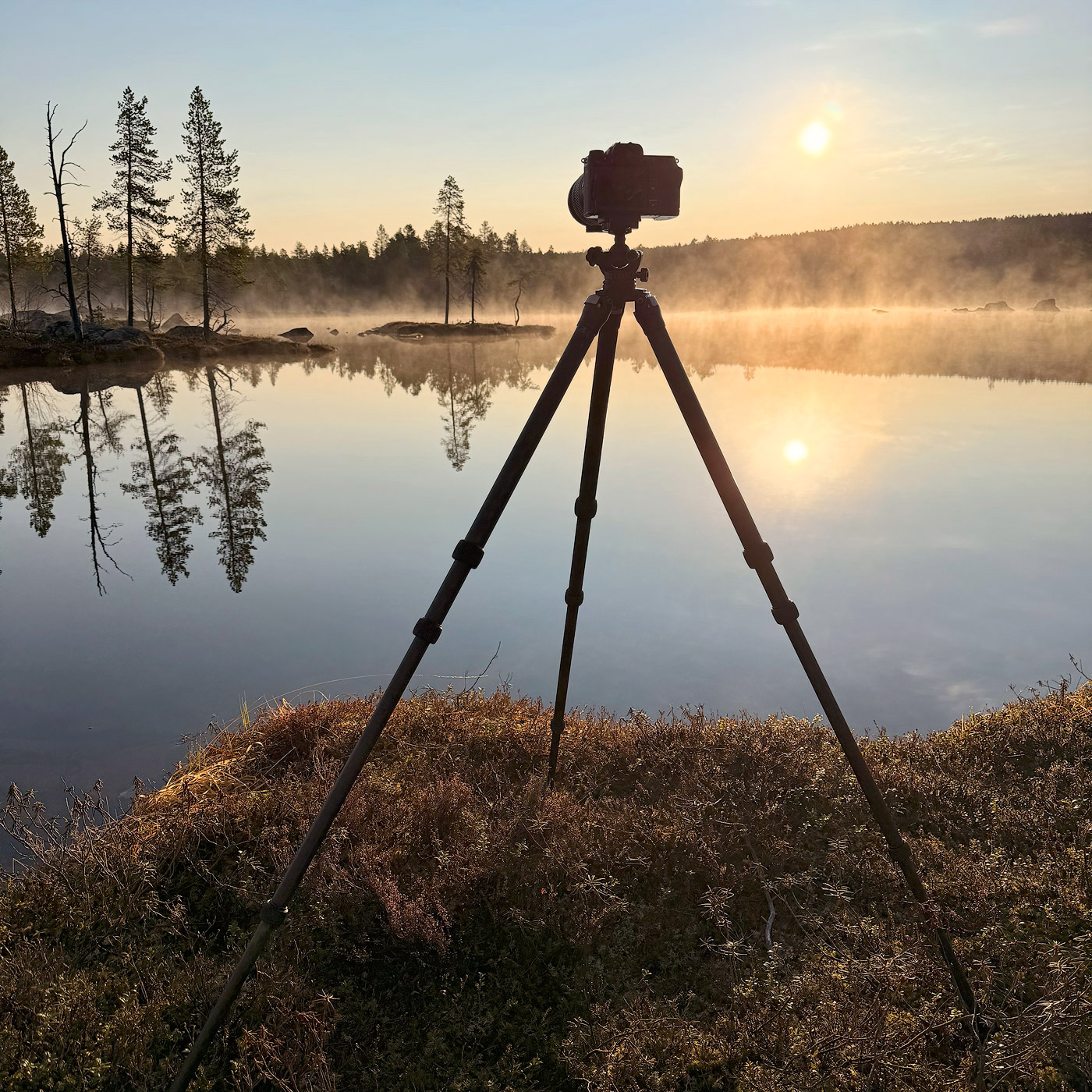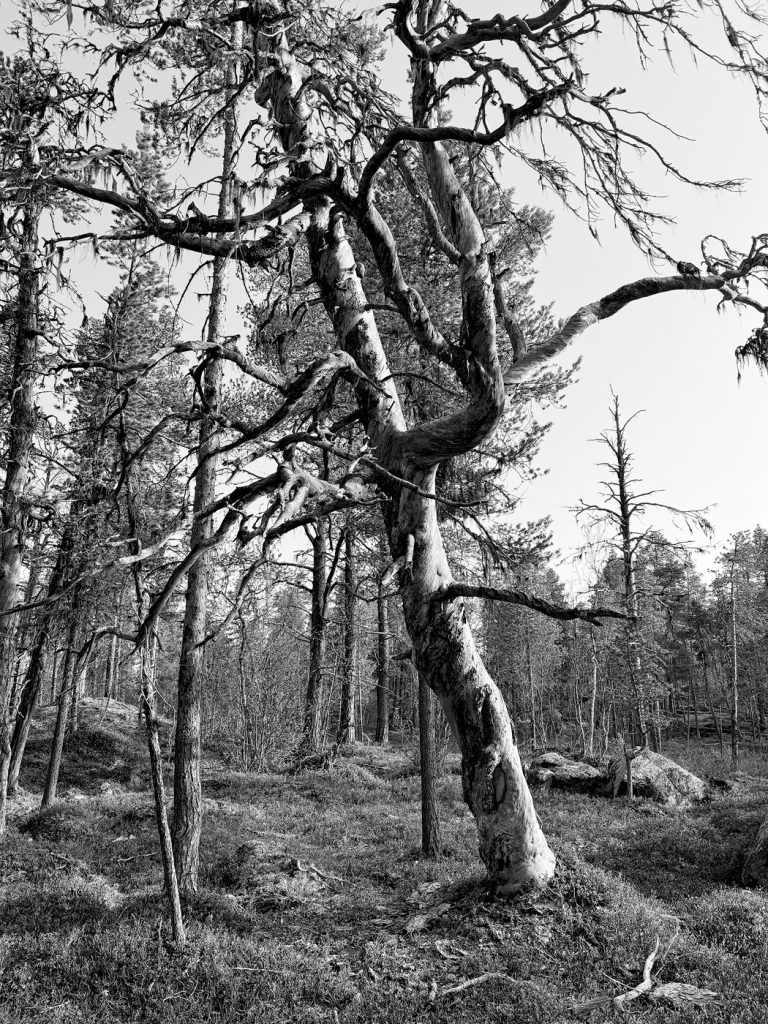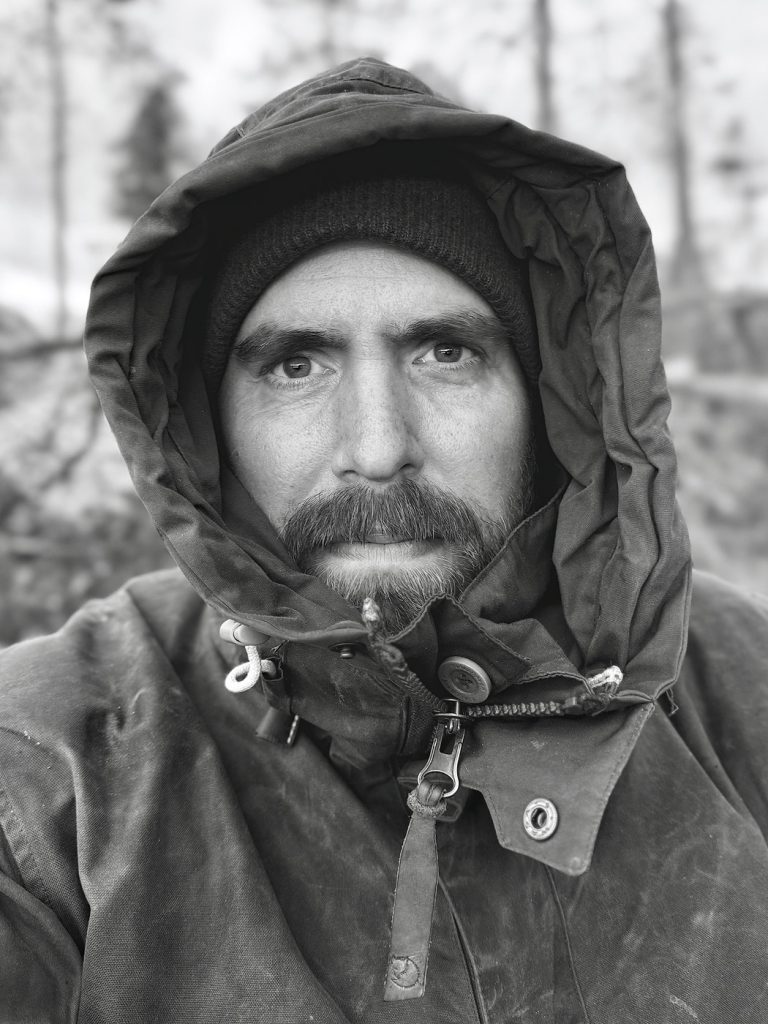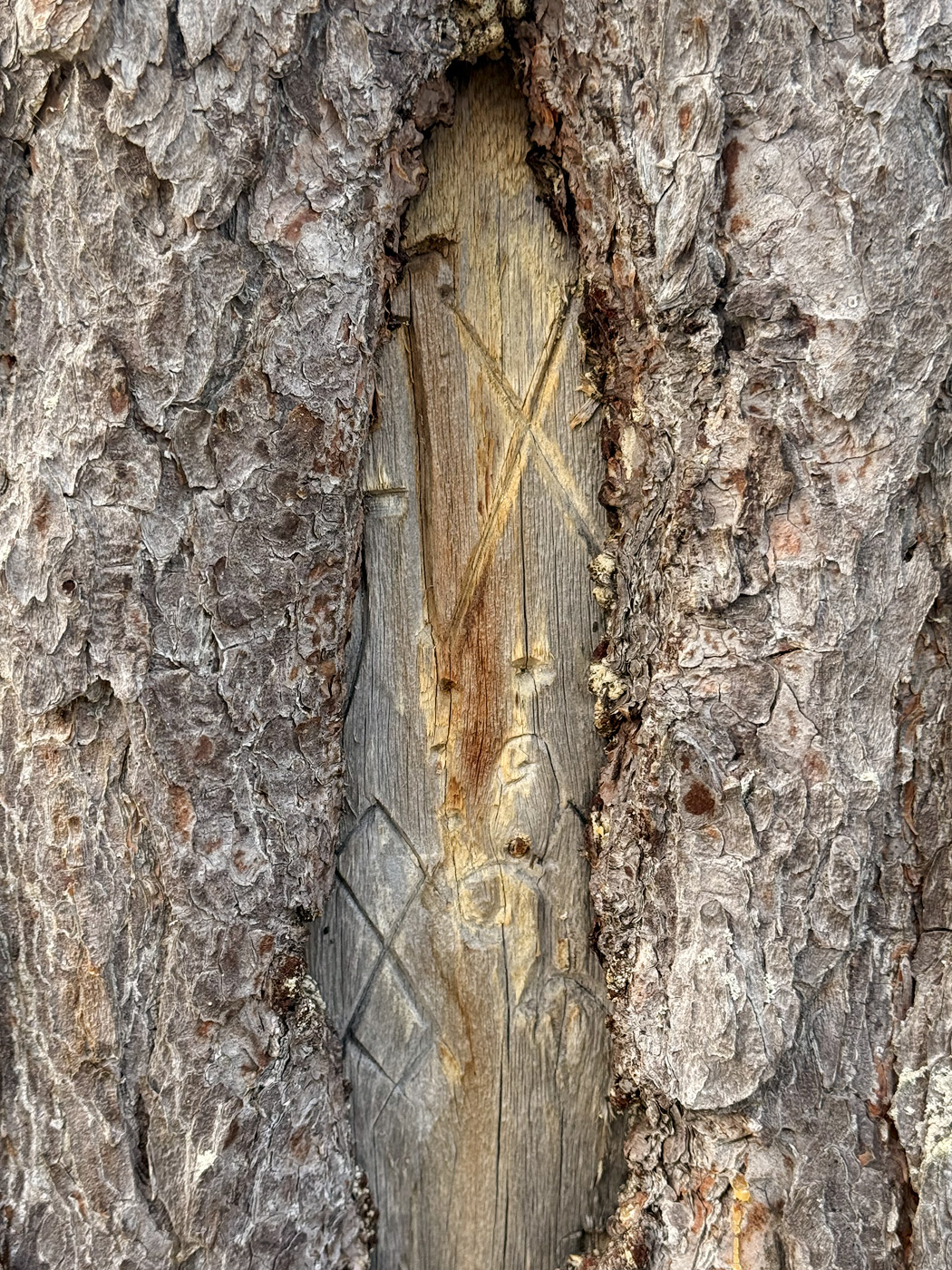
June 9, 2025
After midnight, mist begins to rise from the lake. I’ve spent another night under the open sky. The temperature has dropped below freezing, and the warmth of a small fire keeps me company.
I inflate my frost-covered packraft and paddle out to one of the small islands. I’m tired from yesterday’s hike and the long night, but when the sun rises, I feel a renewed sense of energy. It’s an incredible feeling to be here — completely alone, witnessing a morning like this. When the sun climbs above the treetops and plays through the mist, I feel as if I’ve glimpsed into the soul of the forest.
Time disappears.
When I set up my tent, it’s five in the morning, and the sun is already high in the blue sky. Exhausted, I crawl inside and fall asleep instantly.

A giant, over-500-year-old pine. 
A small, 40-year-old artist.
June 11, 2025
I stay up through the night, tending the fire. By now, I’ve completely turned the day around. Around two, I paddle out onto the lake. A bank of clouds rolls in and blocks the sunrise — but I manage to capture a few film sequences of the birch leaves unfolding. This is a beautiful time of year.
Later in the morning, I make my way up from the eastern end of the lake. There, I discover a giant pine — well over 500 years old. I feel a deep sense of reverence as I walk around it, running my hand along its grey, weather-beaten trunk. I wonder what it has witnessed over the course of its life. Though it’s now dead, it still stands strong — and may remain standing for another hundred years or more before it finally falls to the ground. Nearby, the bark has been peeled from another tree, and initials are carved into the exposed wood. I feel the wings of history pass through me. Who carved these letters? What stories do they hold?
~June 15, 2025
After a morning exploring new parts of the woods, I walk up to a reindeer herder’s cabin. It stands in a beautiful clearing by a small stream, surrounded by open pine forest. I’m curious to look inside, but the windows are shuttered, and a heavy lock hangs on the door.
What strikes me is how little human impact there is around the cabin. Aside from a few stumps from felled pines — likely used for firewood — I see no trace of human activity. Not even a path leading down to the stream. It suggests the cabin is mainly used in winter — and also that the Sámi who use it care for the forest.
I record some footage in the area, then sit down for a while, listening to the stream and the birds around me. It’s a peaceful place. If it weren’t for the tin roof of the cabin, I could just as well be sitting here hundreds of years ago.
— Magnus

What stories do they hold?


